
王一凡有一种奇异的能力,那就是看人,给人起外号,概括得很准,画画就像给人起外号一样传神和准确。所以,绘画和起外号成为他的两个近乎天才的技能。如果说别人是用一篇文章或一部小说来建立人物,王一凡只需一个外号即可。另一方面,他也用画笔建立人物,用一幅画给人们起外号,画和外号互为表现。
所以,他选择具象绘画也就成为合理却富有戏剧性的事情。
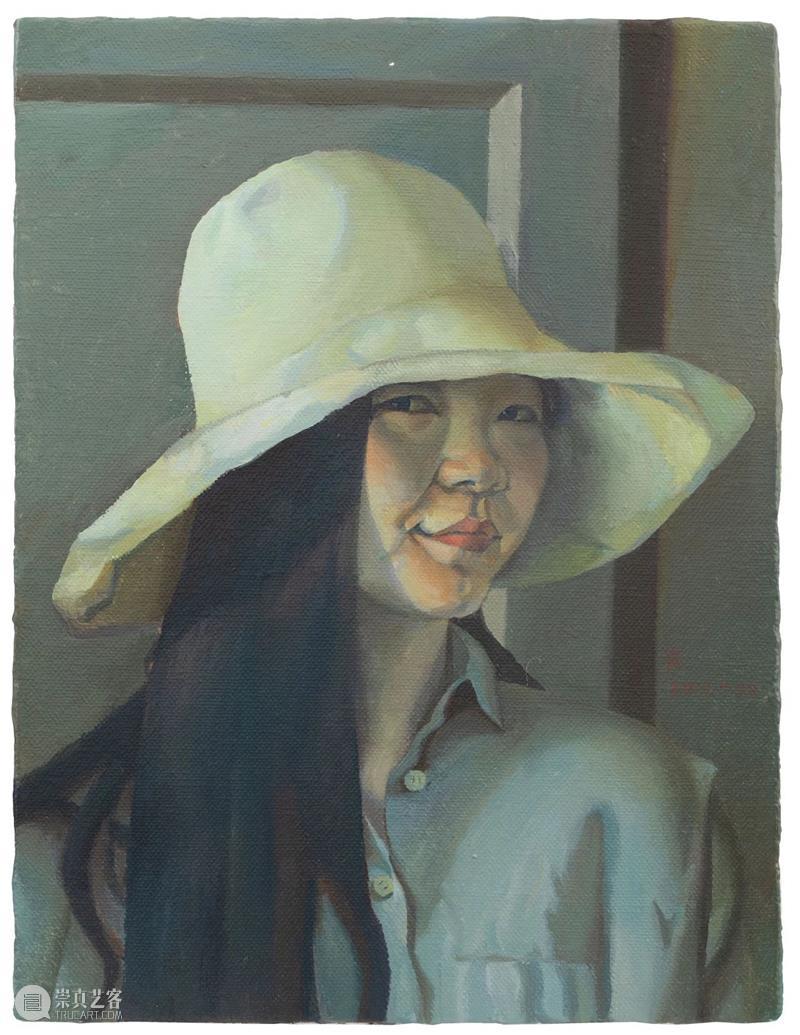
王一凡 Wang Yifan / 戴草帽的吴小可 Wu Xiaoke in a Straw Hat / 布面油画 Oil on canvas / 40×30cm / 2019
没有戏剧性是王一凡不愿看到的。他能抓住的传神之处也往往和戏剧性相重合。这就引出他观察角度的问题。王一凡的观察角度同样极具个人的风格特征。那就是无论从生活里或者镜头之中,他的视角都表现出一种窥视性——自然的,毫无刻意的窥视性。惟窥视,方能发现别人发现不了的,最典型的人物个体形象特征。他的观察准确细致,观察之后,会“取其神”。比如用外号,比如画肖像。我经常觉得他绘画的力量是在窥视之间得到的强大感受力,他可以将此强大的感受力变成极其生动而有能量的语言。这是一种才华。这种惊人的感受力和才华也形诸于绘画。认识他的人都能知道,非常让我羡慕。
也因此,他几乎不用考虑就能解决象征性人物(还有“符号性人物”)和实际人物的平衡问题。他画中常出现的人物——洁夫,吴小可和自己,既可以走向象征,同时可以进行相当精细的刻画,或者进行线条和色彩节奏维度上的游戏。也基于此,他的绘画是开放的,他会考虑一幅画的走向。但是能够建立维度的地方太多了——以至于他可以跟从画笔,在一种“有所期待又未知”的情况下完成旅程。
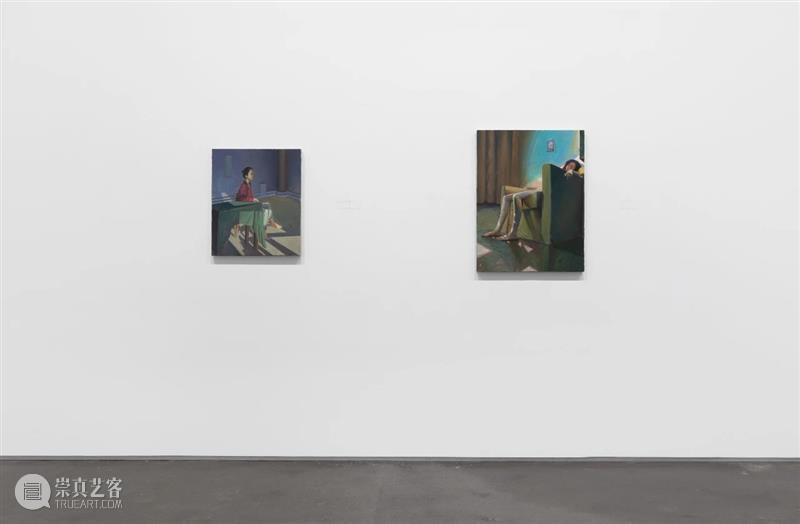
王一凡绘画中还有一种灵魂性的特征。那就是他对这个世界的表达带有特殊的深情。这深情可以表现为他能发现生活中最有趣,最有戏剧性的一瞬间,以窥视的角度捕捉到。也可以表现为他经常要与画笔下的人物建立足够了解的关系。他的自画像和“小可”系列,一个表达的是自我的理解和审视,一个有直接表达深情的动机。他也热衷用镜头记录下来有意思的一切——场景、人物、行动、面貌……而镜头的视角也是自己的兴致和感情的具体体现。以此作为灵感的激发点、基础、趋向,就像一次旅行的计划和装备,由绘画具体完成旅程的亲历体验。其中的遭际,偶遇,甚至始料未及的变化,都反应于最终的呈现。在此,摄影和绘画之间发展为立体交织的关系。这是王一凡在无意中所铺展的领域。
如上的特征一起建立起王一凡绘画的独特风格。这是其艺术特性,取向和个人性格共同作用的结果。不特地用“脑”绘画,也不是全然感性。他是用自己的身体和行动体验,形成自己的视角——窥视,实践(带有期待的不确定性)他的绘画。独特和真诚,使其作品具有立体的厚度。而且,立体的厚度感也可以直接反映到创作主体——王一凡,这位艺术家的身上。
王一舸
2020.7.22
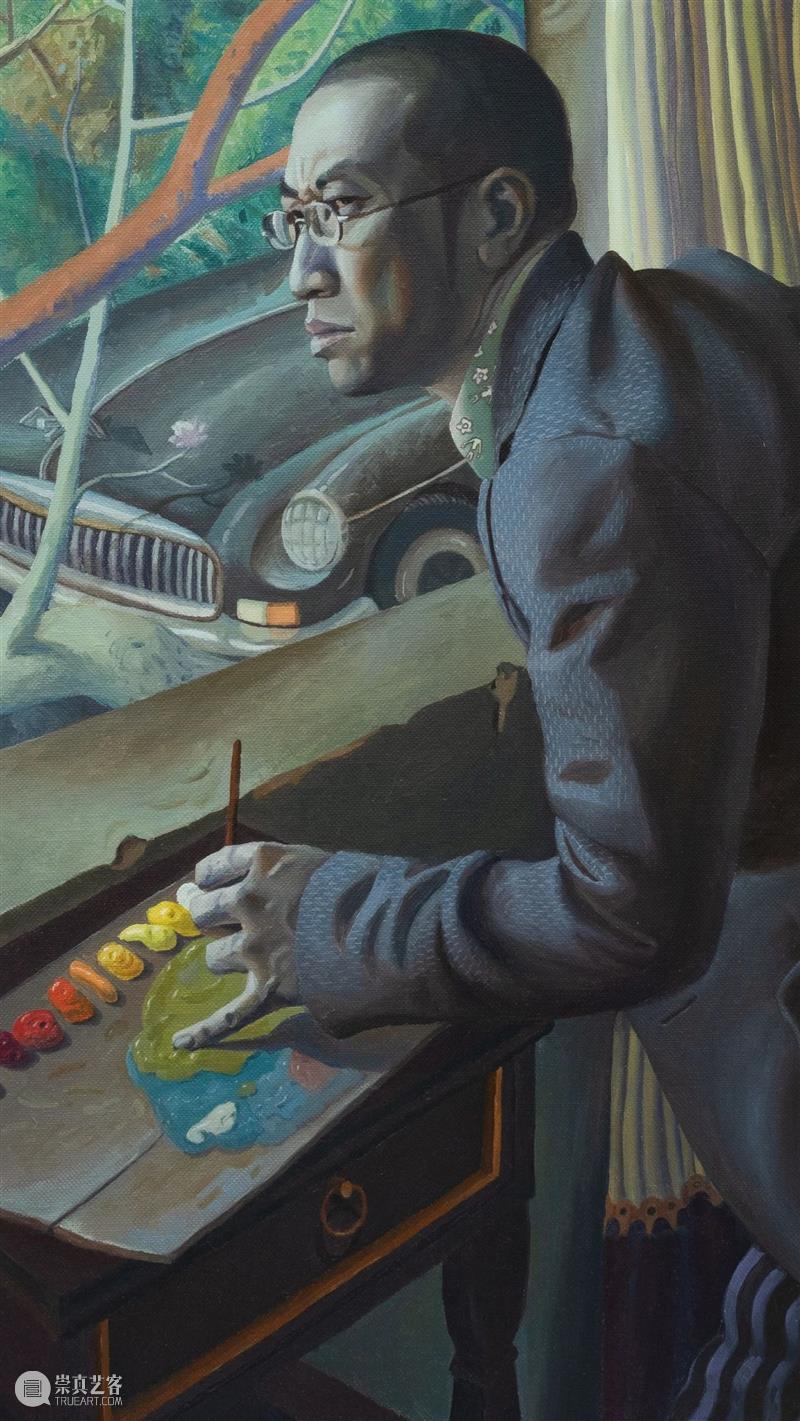
王一凡 Wang Yifan / 吴小可与画家 Wu Xiaoke and the Painter / 布面油画 Oil on canvas / 100x80cm / 2020(局部 / details)
Peeking
A Sketch of Wang Yifan’s Painting
An extraordinary talent of Wang Yifan is to see through people, to give people nicknames that summarize their features perfectly. His art is as vivid and precise as the nicknames that he makes, and that’s why painting is regarded as the other genius-like talent of him. If others have to use an article or a novel to build up a character, all that Wang Yifan needs is just a nickname. Meanwhile, he is also able to create a character with his paint brush – to give a nickname with a painting. The latter is the emblem of the former, and vice versa.
Therefore, his choice of figurative painting became something reasonable and dramatic at the same time.
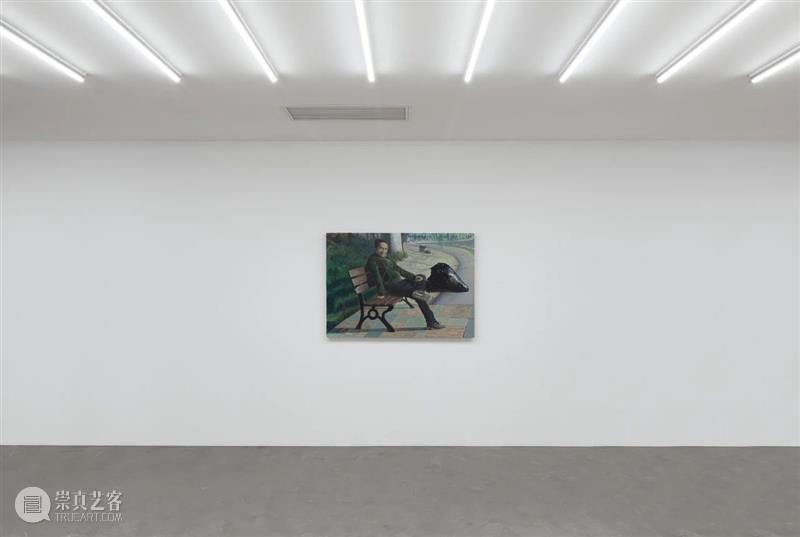
Being dramaless is not up to Wang Yifan’s taste. The vividness that he manages to capture usually comes alongside the drama. Hence Wang Yifan’s angel of observation has to be brought forward. Be it in life or through the camera, his observation always takes place in a peeking angle. It happens naturally without any calculation. Only by peeking, can he discover the neglected and the most typical visual features of an individual. His observation is accurate and careful, which allows him to “capture the soul” of the subject. Giving nicknames is an example, making portraits is another. It often comes to me that the power of his painting derives from the strong sensibility he has gained from peeking. It is a talent that he is able to transform such strong sensibility into a breathtakingly vivid and powerful language. This amazing sensibility, such a talent, is obvious in his paintings, and all who know him are aware – for me, envious – of it.
He barely needs to ponder over the balance between a symbolic figure and a real person, for it will be realized naturally. The figures that often appear in his paintings – Jeff, Wu Xiaoke and the artist himself – may move toward symbolism, while they may also be painstakingly depicted in details, or played around in the dimensions of lines and the rhythm of colors. Wang Yifan will find the right direction for each one of his paintings. In this sense, they are all open-ended. But since there are too many possibilities to build a dimension for a painting, he could only rely on the paint brush to complete the journey in a kind of situation that is “unknown, yet with a certain expectation.”
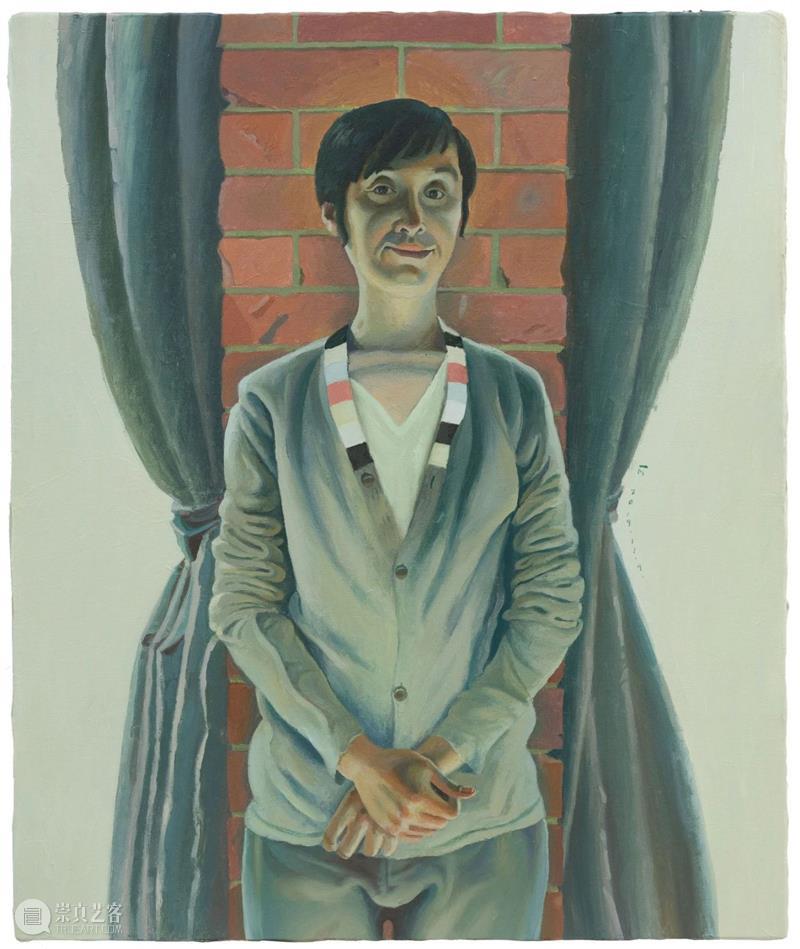
王一凡 Wang Yifan / 大拇指洁夫 Jeff the Thumb / 布面油画 Oil on canvas / 60×50cm / 2019
Another quality of Wang Yifan’s painting is its soulfulness. That is, his soulful expression about the world is profound and special. It is revealed by the fact that he is able to recognize and capture the most interesting and dramatic moments of life from his peeking angle; that he has to have more than enough knowledge of his sitter before he starts. Wang discussed about self-understanding and self-inspection in his self-portraits, and exhibited his fondness of Wu Xiaoke in a series of works with a clear motive. He is also keen to record everything that is interesting – scenes, people, actions, looks, etc., – with the camera, and the camera angle will reflect the specific moods and feelings of the cameraman. It is taken as the source of inspirations, a trigger, an underlying basis and a tendency, like the itinerary and equipment of a journey, the personal part of which will be completed by the physical action of painting. All the circumstances, encounters, and even the unexpected changes of the journey will act on each other to produce the accumulative effect. Here, the interwoven photography and painting have formed a multifaceted structure, and become a serendipitous field of Wang Yifan’s art.
Under the influence of Wang Yifan’s artistic character, orientation, and personality, the abovementioned qualities of his painting have constitute a unique style. Instead of deliberately using his “brain”, or fully relying on his intuition, it was with his own physical experience that Wang Yifan has found his own perspective, namely, peeking, to carry out his painting (uncertainly with a certain expectation). The multidimensional profoundness of Wang’s work is the result of uniqueness and sincerity. Besides, such multidimensional profoundness is also reflected directly by its creator, Wang Yifan, as an artist.
Wang Yige
22nd July 2020
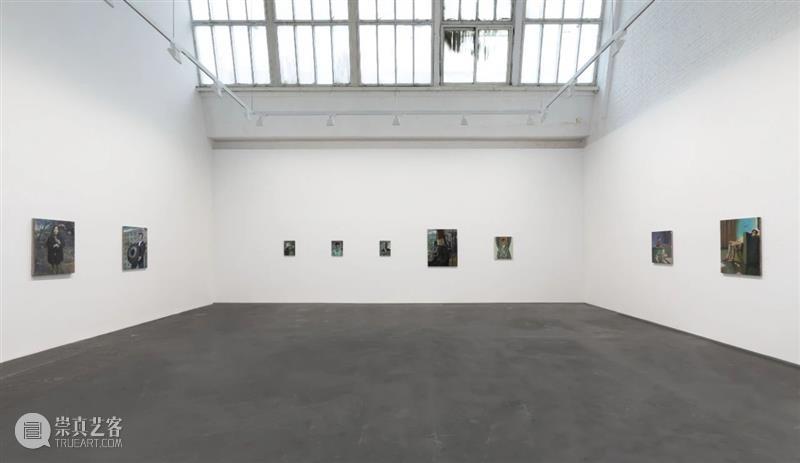
/
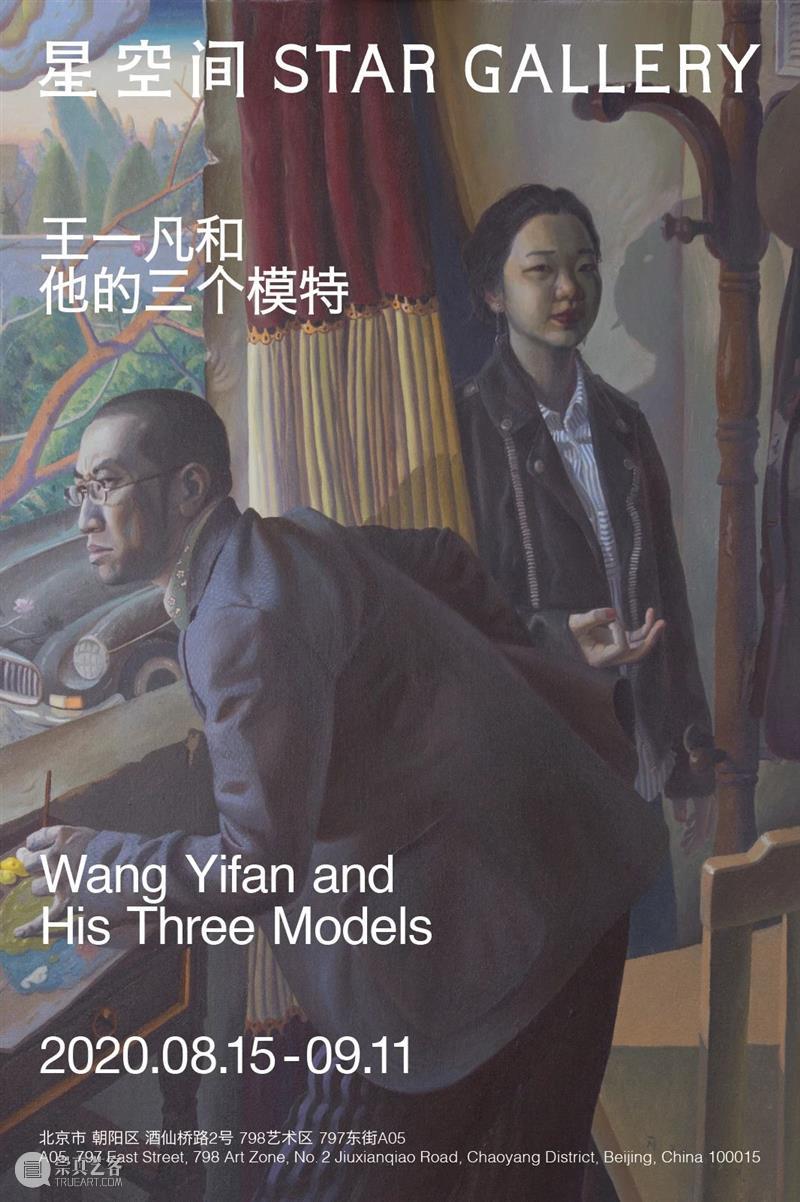

北京市朝阳区酒仙桥路2号798艺术区797东街A05
A05, 797 East Street, 798 Art Zone, No. 2 Jiuxianqiao Road, Chaoyang District, Beijing, Chinan 100015
www.stargallery.cn
欢迎点击屏幕右上角菜单「分享到朋友圈」
「查看公众号」或点击以下二维码选择「识别图中二维码」关注星空间公众微信账号,获取更多资讯。



已展示全部
更多功能等你开启...





 分享
分享